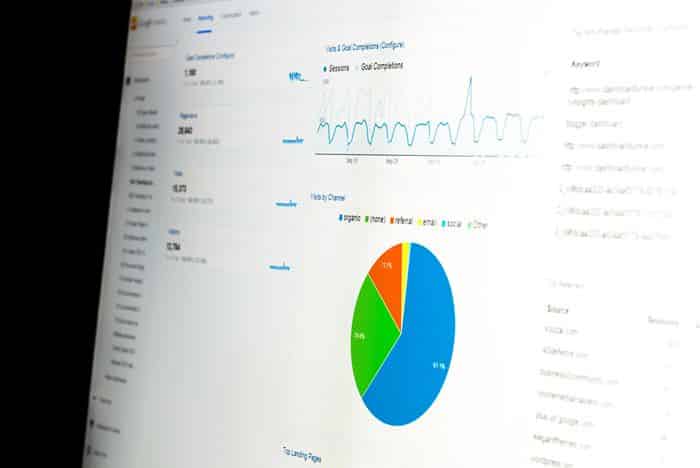As an SEO agency in Charleston, South Carolina, we love Google Analytics! The kind of analytics that once cost business owners thousands of dollars are now at everyone’s fingertips for free. Because Google Analytics provides web analytics in a way that’s easy to understand, there’s no excuse to not use it to help support all your business’s important decision-making.
Valuable Data for Our SEO Specialists in Charleston
When our SEO experts start working with a business that has an existing website, one of the first things we examine is data from Google Analytics. From Google Analytics, we can learn how many visitors the site receives, who many visitors bounce out of the site after visiting a single page, what are the most popular pages, what pages visitors exit from, how long visitors stay on the site, how visitors interact with menus and clickable areas on the site, and so much more! Also, we spend time with our clients exploring their analytics data and educating them on what the numbers mean to them in terms of the online success of their business.
In this article, we explain the basics of Google Analytics. The more you use Google Analytics, the more it’ll start to feel like second nature. In the meantime, this quick introduction will provide you with all the information you need to get started.
What Is Google Analytics?
Google Analytics is an online web analytics service that allows website owners to track just about any type of web data imaginable.
Google Analytics runs on the freemium business model, which means you can get plenty of great functionality completely for free and can upgrade to premium services as you see fit.
Your Google Analytics account may be integrated with other Google web tools like AdSense and AdWords, allowing you to capture the full picture when it comes to keeping track of your online presence.
Google Analytics Main Navigation
While there’s lots of features available on Google Analytics, most of the functionality can be broken down into the 4 main sections shown on your dashboard.
Audience – The Audience section is all about your customers, who they are, and how long they’re staying on your site. This includes data like demographics (if traceable), number of page views, average duration of session, and much more.
Use information from the Audience section to track the level of interaction from your customers over time. You’ll be able to use this data to make decisions about what type of content you’ll produce and what type of people you’d like to attract to your site.
Acquisition — The Acquisition section paints you a picture of how your site interacts with the rest of the world wide web.
This is where you’ll find information on referrals to your website, where your traffic is coming from, and how well your social media campaigns are doing. You’ll also find any information pulled from the AdWords account you’ve linked.
Behavior — In the Behavior section, you can see exactly how your visitors navigate through your site, which is called flow. Here you’ll also find data on how long it takes your website to load and what your customers are searching for on your site.
You can also run experiments from the Behavior section to find out what methods work best for engaging your customers.
Conversions — In the Conversions section, you’ll be able to measure your conversion rate, or how many visitors you’re able to turn into paying customers.
Here’s where you’ll set goals for your web strategy like how long you’d like visitors to stay and how many people you’d like to subscribe.
Google Analytics Custom Reports
The Custom Reports section is another great tool for business planning. You’ll find it under the Customization tab at the top of your dashboard.
Custom reports are exactly what they sound like–you’ll be able to view reports about whatever type data you’d like to drill down on. You’ll enter the parameters and metrics you’d like Analytics to use to sort through your website’s data, and out come the reports you need to help manage every aspect your business’s online presence.
You can dive deeper into Google Analytics by using the help guides available on the site. And if you’re a Google Analytics Premium member, remember to use the premium support service available to you if you run into any problems–it’s what you’re paying for!
It may all seem a bit confusing to you at first, but don’t worry. Stick with it and you’ll be a pro in no time. And if you ever doubt the importance of collecting data about your web presence, just remember–you can’t manage what you don’t measure.









